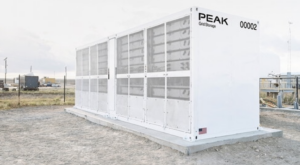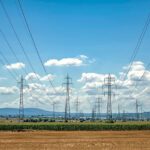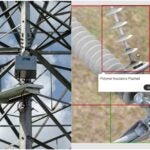As we stand on the brink of an all-electric future in North America, we find ourselves amidst a monumental shift—from a reliance on oil, coal, and gas to a world powered by electricity. This transformation is not just promising; it’s essential.
Electrification is now an undeniable reality. From electric vehicles and data centers to renewable energy sources, North America’s appetite for electricity is surging. Today’s society increasingly expects that anything that can be electric will be electric. However, this enthusiasm must be tempered by an awareness of the challenges we face in meeting this growing demand.
Demand Growth Presents Challenges
One of the most pressing issues is the looming imbalance between electricity demand and supply. As we integrate more technologies and expand our digital landscape, the need for electric power is escalating at an unprecedented rate. For instance, data centers, which are vital to our digitally driven world, accounted for approximately 4% of total electricity consumption in the first half of 2023. With the rise of artificial intelligence and the exponential growth of data, projections suggest this figure could climb to 6% by 2026—a staggering 50% demand increase in just a few years.
The forecasts for future demand vary dramatically. Analysts and government agencies offer estimates ranging from a 1.3x to 2x increase by 2050, which means these entities will commit a varying number of key resources to electrification in the next 25 years. This uncertainty complicates our ability to plan effectively for the future.
Other Obstacles Hinder Progress
The key to navigating this complexity lies in achieving congruence among four critical components of our electricity system: generation, transmission, distribution, and demand. If we cannot align these elements, we risk catastrophic failures in our energy infrastructure.
Several choke points hinder our progress toward this balance. They include:
■ An Aging Grid. Our current electrical grid is not only outdated but also fragmented, comprised of three major sections and numerous isolated transmission areas. This disjointed system prevents the sharing of excess supply across regions, especially during peak demand.
■ Regulatory Hurdles. A staggering 75% of new generation projects fail to reach commissioning due to complex permitting processes. On average, these projects can take up to four years to gain approval, stalling critical advancements.
■ Equipment Shortages. Key components of our electrical system, such as switchgear and transformers, are experiencing significant shortages, with lead times stretching from one to two years. This scarcity can delay essential upgrades and expansions.
■ Workforce Challenges. The U.S. is facing a troubling trend in its electrical workforce. While we add around 3,000 electricians annually, we lose approximately 10,000, resulting in a net loss of 7,000 skilled workers each year. This workforce is crucial to implementing the changes we need.
Moreover, the industry has historically functioned in silos—utilities, regulators, manufacturers, and contractors often lack effective communication and collaboration. This disconnection has resulted in visible cracks in the system, evident by increasing instances of blackouts and brownouts worldwide. The urgency of these issues cannot be overstated; by 2035, we could face a significant imbalance in our energy system. However, the challenges we face are not insurmountable. A holistic approach that brings together all stakeholders—industry leaders, government entities, and the workforce—can help us overcome these obstacles.
Collaboration Is a Key
A notable example of collaborative effort emerged in May last year with the formation of a strategic alliance among key industry organizations, including the National Electrical Manufacturers Association (NEMA), National Electrical Contractors Association (NECA), National Association of Electrical Distributors (NAED), and the National Electrical Manufacturers Representatives Association (NEMRA). This coalition aims to address the pressing challenges of re-electrification and leverage opportunities for the benefit of future generations and the economy.
To achieve a balanced energy future, we must prioritize investment in the grid, streamline permitting processes, expand manufacturing capabilities, and enhance workforce development. At Southwire, we are committed to engaging with experts and partners to play our part in this vital conversation.
Investing in manufacturing capacity is essential. We need to ensure the necessary products and solutions are available to meet the demands of an electrified future. Innovation is crucial; exploring new technologies and building value-added solutions will help us stay ahead of disruptive trends.
As we navigate this critical transition, it’s important to remember that the evolution of energy systems is a continuous journey. We are at the threshold of a new era—one that promises to enhance the lives of millions. However, realizing this potential requires unity and collaboration among all stakeholders.
We must act with intention—not just for our own interests, but for the betterment of North America and the world at large. This is an unprecedented opportunity for all businesses to contribute to a sustainable future for our families and future generations. Together, we can power the next electrical revolution.
—Rich Stinson is president and CEO of Southwire.











